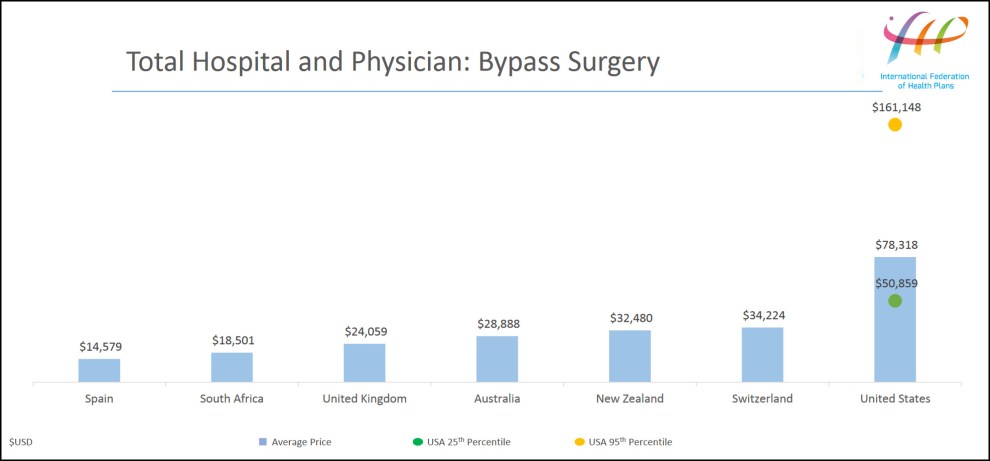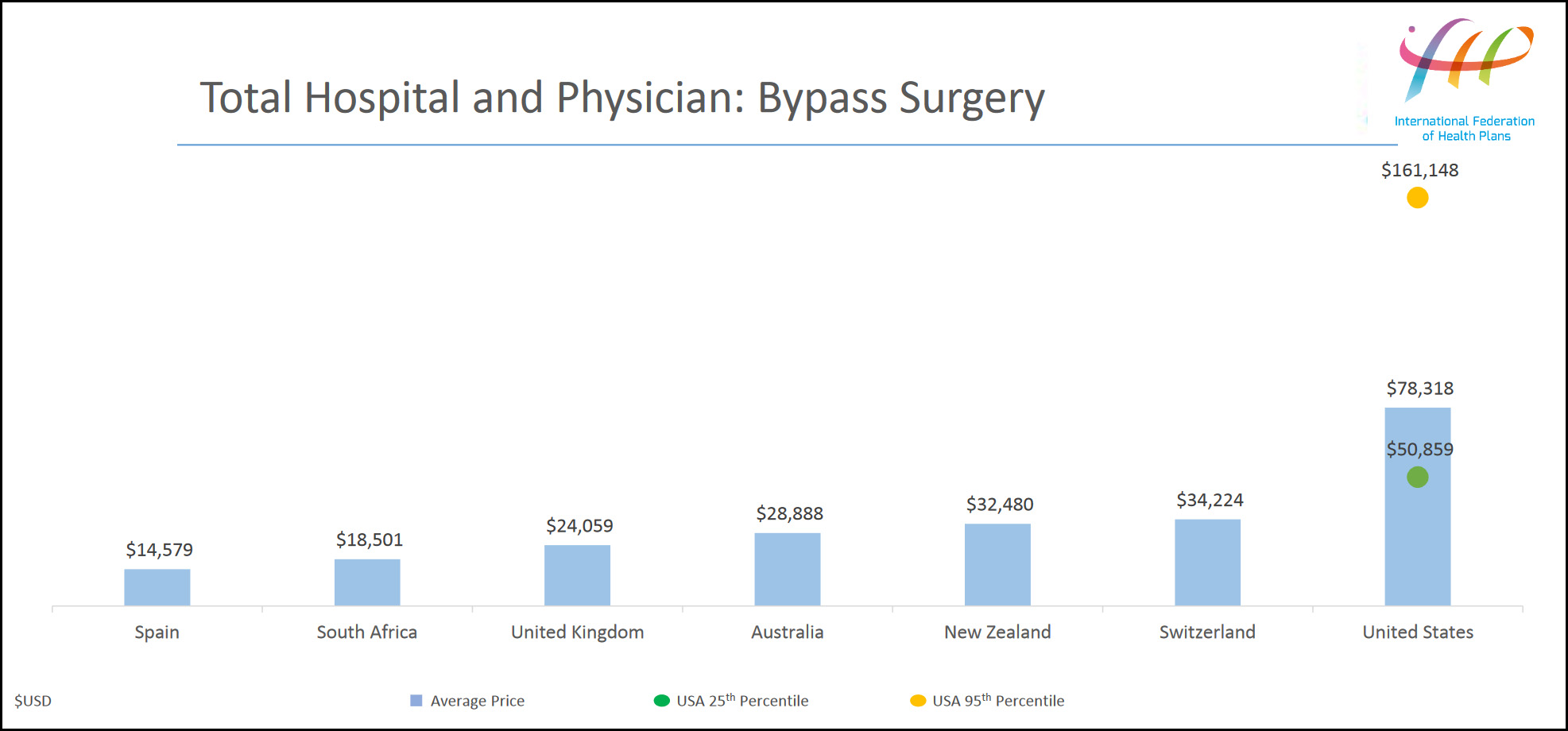
Andrew Sprung has a complaint about Elizabeth Warren, one that I’ve shared in the past:
For almost two years, I have complained at intervals that Elizabeth Warren is faking it on healthcare — that is, blaming U.S. healthcare dysfunction entirely on the rapine of health insurers and pharma, while giving healthcare providers a pass.
In presenting her plan to finance Bernie-brand Medicare for All, Warren leads with this rhetorical reflex but then, finally, departs from it. She has to, as the plan’s viability depends on cutting off providers’ most lucrative revenue sources.
Sprung is right, and no universal health care plan will succeed unless it addresses our real problem. Here’s an example:

In Britain, a heart bypass costs $24,000. In America the average price is $78,000, and that can skyrocket to $161,000 or more if you’re unlucky enough to get treated at an expensive hospital.
Why? Because heart surgeons in America are paid more. Hospital rooms cost more. Drugs cost more. And, yes, admin costs are higher. This can’t be cured overnight even with the best health care plan, but it can be slowed down and addressed over time. That should be a goal of any universal health care plan worth the name.















